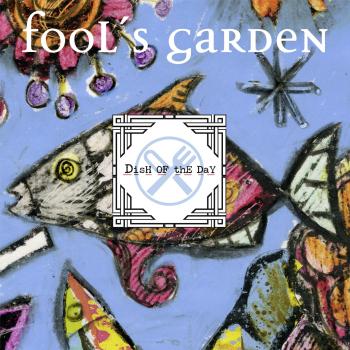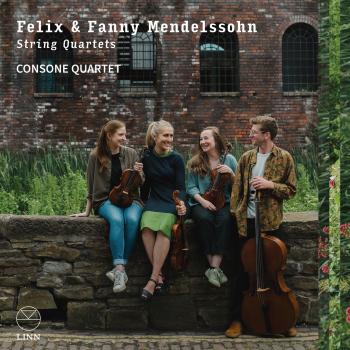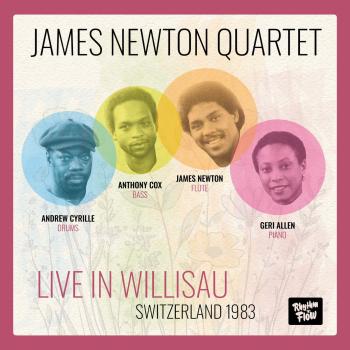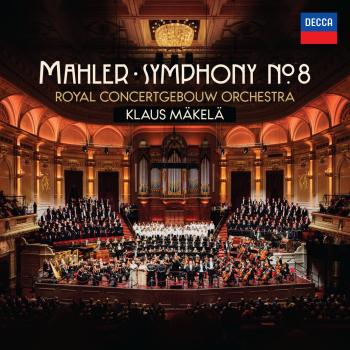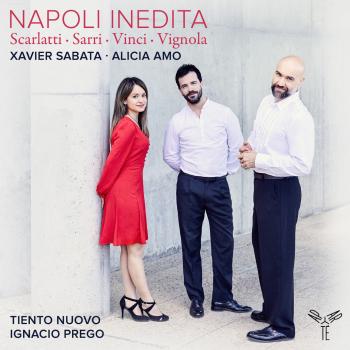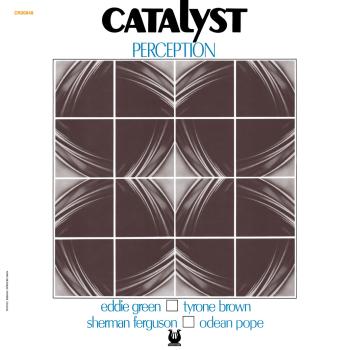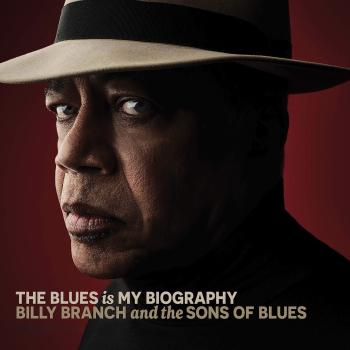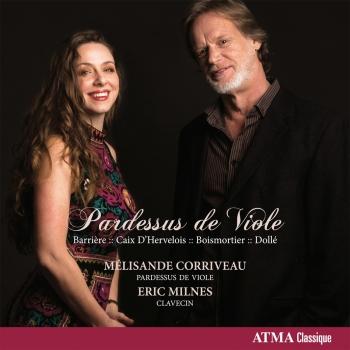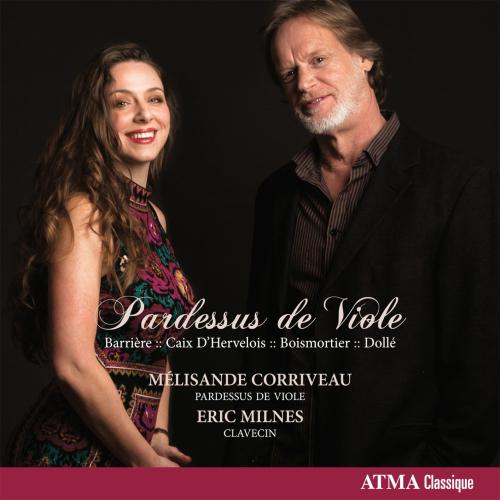
Pardessus de viole Mélisande Corriveau & Eric Milnes
Album Info
Album Veröffentlichung:
2016
HRA-Veröffentlichung:
22.06.2022
Label: ATMA Classique
Genre: Classical
Subgenre: Chamber Music
Interpret: Mélisande Corriveau & Eric Milnes
Komponist: Jean-Baptist Barrière (1707-1747), Louis de Caix d'Hervelois (1677-1759), Joseph Bodin de Boismortier (1691-1755), Charles Dollé (1710-1755)
Das Album enthält Albumcover Booklet (PDF)
Entschuldigen Sie bitte!
Sehr geehrter HIGHRESAUDIO Besucher,
leider kann das Album zurzeit aufgrund von Länder- und Lizenzbeschränkungen nicht gekauft werden oder uns liegt der offizielle Veröffentlichungstermin für Ihr Land noch nicht vor. Wir aktualisieren unsere Veröffentlichungstermine ein- bis zweimal die Woche. Bitte schauen Sie ab und zu mal wieder rein.
Wir empfehlen Ihnen das Album auf Ihre Merkliste zu setzen.
Wir bedanken uns für Ihr Verständnis und Ihre Geduld.
Ihr, HIGHRESAUDIO
- Jean Barrière (1707 - 1747): Sonate IV en sol majeur:
- 1 Barrière: Sonate IV en sol majeur: I. Adagio 02:48
- 2 Barrière: Sonate IV en sol majeur: II. Allegro 05:47
- 3 Barrière: Sonate IV en sol majeur: III. Adagio 01:13
- 4 Barrière: Sonate IV en sol majeur: IV. Aria 04:42
- Louis de Caix d'Hervelois (1677 - 1759): Suite en ré mineur:
- 5 Caix d'Hervelois: Suite en ré mineur: I. Prélude 02:20
- 6 Caix d'Hervelois: Suite en ré mineur: II. La tourolle 02:19
- 7 Caix d'Hervelois: Suite en ré mineur: III. La légèreté 01:19
- 8 Caix d'Hervelois: Suite en ré mineur: IV. Sarabande 02:51
- 9 Caix d'Hervelois: Suite en ré mineur: V. Menuets 1, 2 et 3 04:25
- Joseph Bodin de Boismortier (1689 - 1755): Deuxième sonate en sol mineur:
- 10 Boismortier: Deuxième sonate en sol mineur: I. Gravement 01:44
- 11 Boismortier: Deuxième sonate en sol mineur: II. Courante 02:36
- 12 Boismortier: Deuxième sonate en sol mineur: III. Rondeau. Gracieusement 03:08
- 13 Boismortier: Deuxième sonate en sol mineur: IV. Gigue 02:27
- Charles Dollé (1735 - 1755): Pièce tirée de l’œuvre Ive:
- 14 Dollé: Pièce tirée de l’œuvre Ive: La favoritte. Tendrement 02:03
- Sonata I en la mineur:
- 15 Dollé: Sonata I en la mineur: I. Adagio 02:02
- 16 Dollé: Sonata I en la mineur: II. Allegro ma non tropo 05:05
- 17 Dollé: Sonata I en la mineur: III. Sarabanda 02:44
- 18 Dollé: Sonata I en la mineur: IV. Giga Allegro 02:09
- Pièce tirée de l’œuvre Ive:
- 19 Dollé: Pièce tirée de l’œuvre Ive: La Précieuse. Fièrement 03:41
- 20 Dollé: Pièce tirée de l’œuvre Ive: Les Regrets. Affectueusement 03:59
Info zu Pardessus de viole
Mélisande Corriveau (pardessus de viole) and Eric Milnes (harpsichord) revisit various of the composer’s sonatas in the rare but no less authentic colors of the pardessus de viole. This French instrument from the viol family was invented at the end of the 17th century to compete with a newcomer in chamber music, the violin.
"A pardessus recital is a rarity, indeed! Fine treble viol plays are reasonably thick on the ground these days but are heard mainly in 17th-century consort music and earlier ensemble music.
Pardessus players belong to a subset of viol players who specialise in 18th-century French chamber music, both pièces and sonatas composed specifically for the pardessus in les gouts-réunïs style and violin sonatas of the day. The original devotees of the six- and later five-string pardessus were most often aristocratic. Mélisande Corriveau belongs to a new generation of players bringing formidable performing skills and knowledge of period practices. A recorder player and Baroque cellist as well, Corriveau wrote her doctoral thesis on the pardessus and on this CD eloquently plays an instrument by Nicolas Bertrand (1710). Listeners will marvel at its silvery tone, thinner than that of a violin but still sparkling and warm.
The composers represented here were all either viol players, Hervelois in particular, or knowledgeable about the specific idiomatic qualities of the instrument. Barrière, the violist who travelled to Italy and returned a cellist, contributes perhaps the most blended and beautiful pardessus sonata (1739), though Boismortier’s (1736) runs a close second. The music – a varied mixture of Italian sonata movements, French dances and character pieces – is engaging and divinely interpreted by Corriveau and sympathetically accompanied by Eric Milnes. Dollé’s La précieuse is a vivid portrait, infused with discourse, wit and fine detail, and Les regrets is virtually a private conversation. This album remarkably evokes a hitherto neglected musical milieu that will, one hopes, win many new followers." (Gramophone)
Melisande Corriveau, viola da gamba
Eric Milnes, harpsichord
Mélisande Corriveau
Devotee of Renaissance and baroque music, enthusiast of historic instruments, travel and gourmet food, Mélisande Corriveau is mother to two charming adolescents!
Player of recorders, cello, all viols including the pardessus de viol, she has become a virtuoso at l’Art de toucher, as Couperin put it, on her bevy of instruments. She hunts for new repertoire, is inspired by treatises and takes a keen interest in the historic context of music in society and the musical languages the societies created. Her next conquest is to be the violoncello piccolo!
Playing with her inspiring colleagues with whom she shares so much extraordinary music, musical cameraderie and close friendship, is at the heart of her musical life! She feels privileged to work with her companion and duo partner, musical director and keyboardist, Eric Milnes, her consort partners in Les Voix humaines, her group L’Harmonie des Saisons and her European colleagues in Ensemble Masques, all giving her the gift of ongoing fascinating projects and travel to exotic lands, a nomadic life that reflects the music she loves!
Gramophone: “Mélisande Corriveau is of the new generation of musicians gifted with great interpretive talent as well as knowledge of performance practice… virtuosity, delicacy and elegance, sensitivity and refinement all in the service of colourful and textured expressivity…”
Mélisande Corriveau has recorded extensively on several labels and her recent CD of French 18th century music, Pardessus de viole with Eric Milnes was included in the CBC’s top ten while her ensemble L’Harmonie des saisons was winner of a Juno award in 2016.
She plays on a 1691 Barak Norman viol, a Nathaniel Cross cello from 1700, and a pardessus de viole by Pierre Le Pilleur dated 1755.
Booklet für Pardessus de viole


